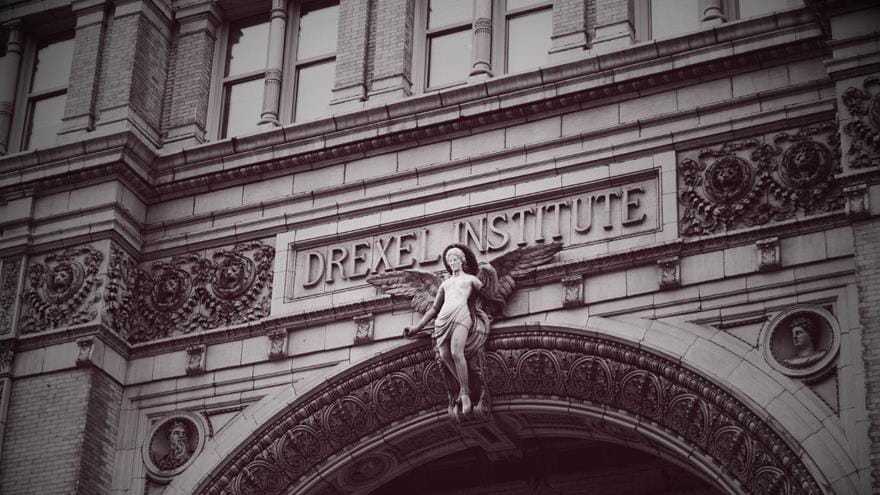Drexel Dragon Secrets, Straight from the Sculptor
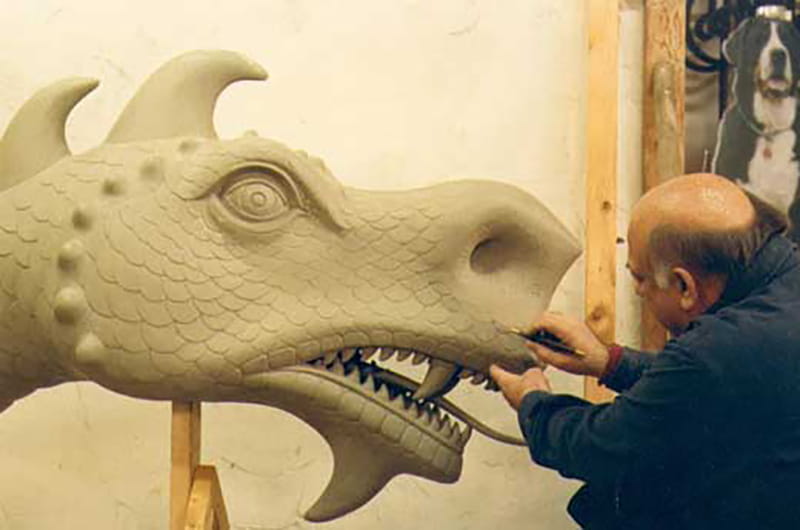
The “Mario the Magnificent” dragon statue on the corner of 33rd and Market streets is one of the most prominent landmarks of the University City Campus, and is known as a popular meeting spot, a place for student organizations to hold fundraisers and the best Instagram background on campus.
And at 10 feet high, 14 feet long and 4,100 pounds, the sculpture has been a very visible part of Drexel since it was dedicated in 2002, five years after Drexel’s dragon finally got a name. And why was “Mario” chosen? He’s named in honor of Mario V. Mascioli ’45, who served as a member of Drexel’s board of trustees and chairman and governor emeritus on the board of governors of the Drexel Alumni Association — who and never missed a men’s basketball game for over 20 years.
Renowned Philadelphia sculptor Eric Berg created the “Mario the Magnificent” statue — and a tortoise sculpture located at the Academy of Natural Sciences of Drexel University, in addition to other bronze sculptures here in Philadelphia and across the country. In this edited interview, he talked about how he successfully pitched the idea and location of the sculpture, how long it took to create Mario and why he’s glad that the statue isn’t any bigger.
Q: What’s it like to have created one of the most recognizable destinations on Drexel’s campus?
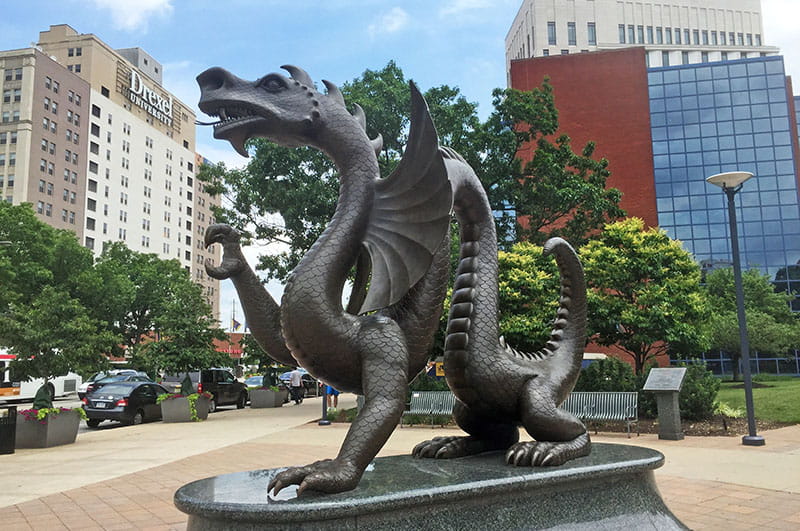
A: I didn't realize how known I was gonna get because of that dragon. I’ve got a lot of other public work in the Philadelphia Zoo, the Children’s Hospital of Philadelphia, the Please Touch Museum, Fitler Square and Rittenhouse Square. But in addition to all the Drexel students I’ve met, I think everyone I've ever met in Philadelphia knows the Drexel Dragon.
Q: Did you anticipate that happening when you first started working on it?
A: No. It was a great idea that I had about, oh, maybe 40 years ago. As a young sculptor, I was looking at places that might be interested in having a piece of my work. I had in my mind then that Drexel really didn’t have any central focal point on its campus. And I happened to have caught it at just exactly the right moment.
I wrote a letter to Dr. Constantine Papadakis [Taki], who was the president of Drexel, and copied Anthony [Tony] Caneris, who was the vice president of student affairs and Taki's right-hand man. I told them why I thought the dragon sculpture would be a great addition to the campus and showed off my credentials. It was really a total cold call.
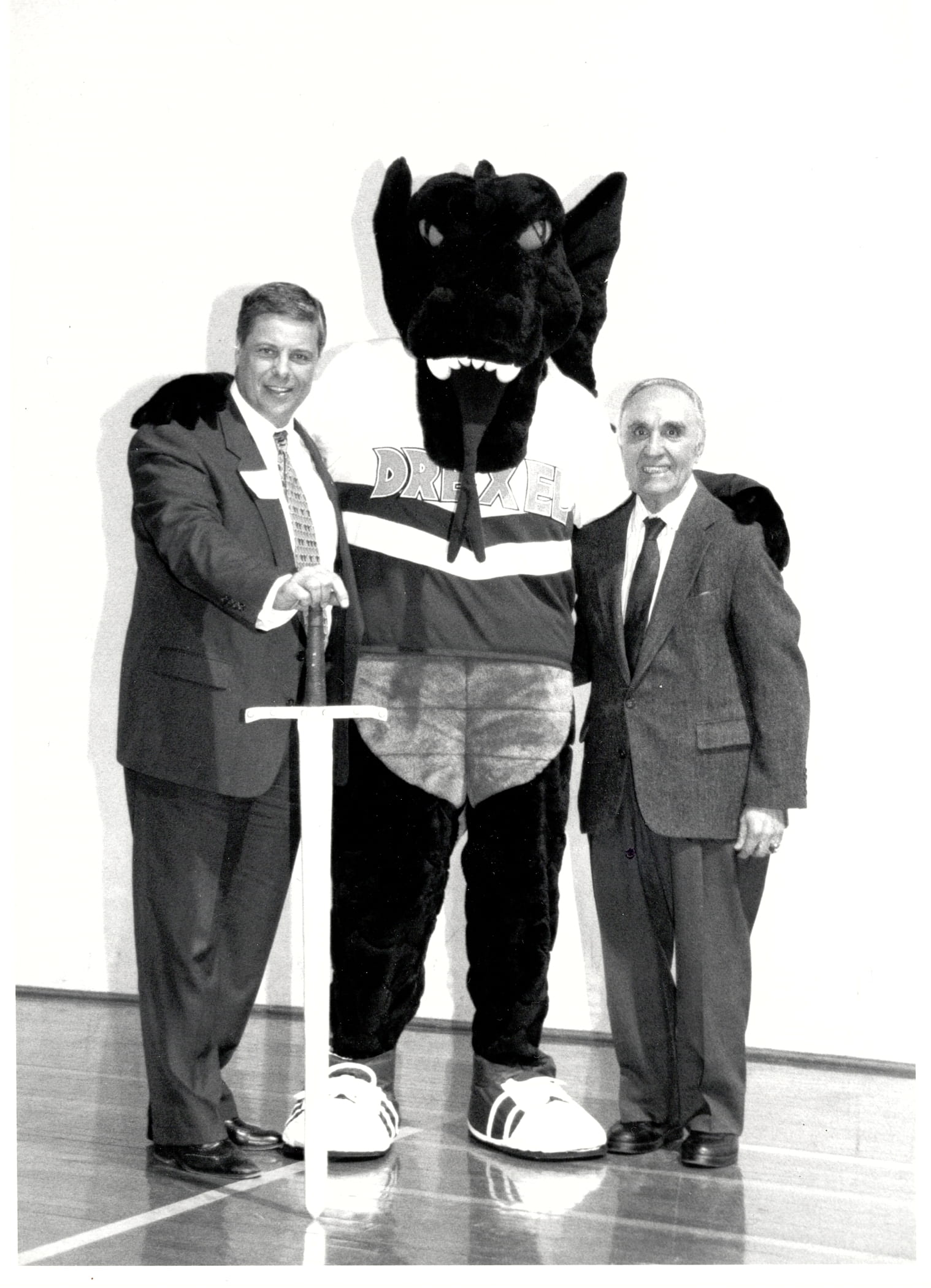
I didn’t hear anything back for about two or three months, so I sent a second letter that said, “I know this was too good of an idea not to look at twice.” A few days later I got a call from Tony Caneris saying, “What do we do to get started with this dragon?” I said “Well, I’ll tell you what. You give me five thousand bucks and I’ll make a model and I’ll adjust the model until people are happy with it.” So they agreed.
We had some meetings with the real Mario and Drexel’s athletics director, Eric Zillmer, and a few other people. I ran my plan by them and they liked it.
Q: How did you decide on the design?
A: I gathered all the information I could about dragons. I took out my son’s “Dungeons & Dragons” books and I got some files from Drexel that had some pictures of the dragon used on the flag and logo. I realized Drexel already had used that dragon logo, which is kind of an abstract dragon, so I couldn’t really go that far off of that. What I did was I took that abstract, and then I gave him scales and wings and fingernails and bumps and warts and everything I could think of to dress him up as a real dragon and make it very realistic. If you can call a dragon realistic! And then scales, of course. There are 13 million scales that graduate in size from being larger and wider on the body to narrower and smaller for the feet and down the legs. Each scale was carved in relief so that it would look like a scale.

I also gave the dragon a slight twist. You can really see it from the rear of the dragon where the body bends. It’s actually my favorite view as you go behind the statue, because you can see how the body moves.
Q: You also carved some people’s initials near the dragon’s armpits. Who were they for, and why?
A: The initials were just a private “thanks” to the donors and key players for the project. Tony Caneris was the “get it done” lead figure. I can’t thank him enough.
Q: I heard that, at one point, Drexel was thinking about drilling down to where the subway runs under Mario so that steam would blow out of the dragon’s mouth. Is that true?
A: I think the “steam” concept was really a pipe dream, but at the actual dedication a hose was rigged from the sidewalk steam outlet to the Dragon's mouth. Steam did flow for the ceremony, but that was about it!
Q: How long did it take to make the statue?
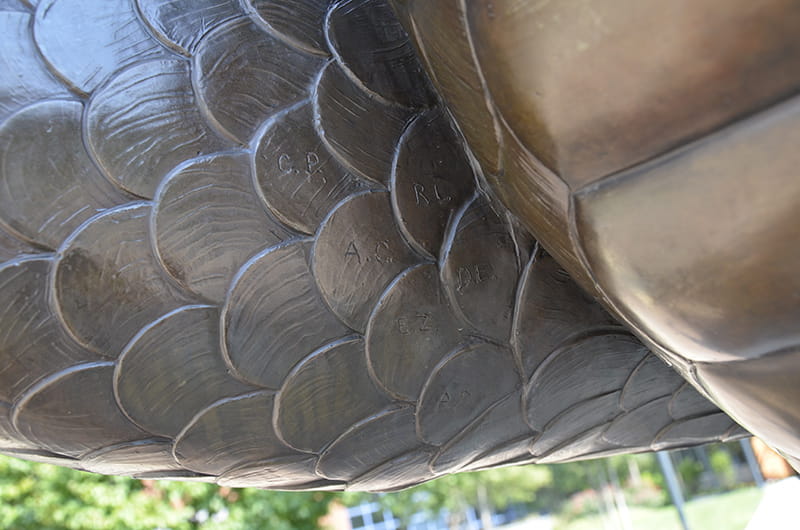
A: My first letter to President Papadakis was in 1999, right around the first of the year. It took almost exactly three years to get the whole project completed.
It was the most fun project. When you get problems with a piece that size, you get big problems. But in this case, everything went so smoothly that the only problem was that when we went to set the Dragon to the base, one of the stainless-steel rods that went from the dragon into the granite was about a quarter of an inch off from the drill hole. We just had to widen the drill hole. But that was the biggest problem.
Tony Caneris said to me afterward that the only mistake was not ordering the larger size. I’d given Drexel three alternative sizes for the statue: 8 feet by 12 feet, 10 feet by 14 feet and 12 feet by 16 feet. The 14-foot one was chosen, and I think it’s big enough. When you make something a little bit bigger, everything about it expands. I was lucky that I did the medium one and I think it worked out great. I have always been happy with it. I really love the fact that Drexel still has it and people from Philadelphia seem to enjoy having it there.
Q: You had mentioned that you have a studio by Drexel. Does that mean that you drive by the dragon and see it?
A: I do. My studios is at 38th and Baring streets. I drive down Market Street all the time and get to see everyone taking pictures with it.
In This Article
Drexel News is produced by
University Marketing and Communications.

